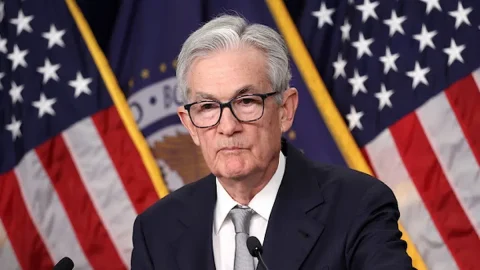Facebook è una rete ad alta tensione con frequenti e imbarazzanti cortocircuiti. L’ultimo riguarda la decisione di mantenere i post incendiari di Trump. Una decisione che ha messo in così serio imbarazzo alcuni dei suoi maggiori inserzionisti — come Unilever, Coca Cola, Ford Microsoft Pfizer, Starbucks — da provocare un embargo senza precedenti nella storia nella storia dell’industria pubblicitaria.
E Facebook non è certo l’unico social ad essere andato in cortocircuito. A spiegarci come i social media hanno finito per uccidere la comunicazione c’è adesso un libro appena uscito (Guerini Next e goWare per l’online) che porta proprio quel titolo, Come i social hanno ucciso la comunicazione. Perché, come chiariscono bene i due autori Guido Bosticco, Giovanni Battista Magnoli Bocchi e i vari contributori, se è vero che il mercato vive ormai sui social, è altrettanto vero che la comunicazione, cercando disperatamente la viralità, è andata a ramengo sui social.
GIGANTI DAI PIEDI DI ARGILLA
I giganti del web possono influenzare l’opinione mondiale e la stessa conversazione pubblica più delle istituzioni stesse, ma il loro modello poggia su fondamenta fragili. Sono giganti dai piedi d’argilla. Il pubblico di massa che li tiene in piedi è divenuto, oltre ogni ragionevole dubbio, ingovernabile, ingestibile e intemperante.
Non si vede ancora il modo di porre rimedio a questo stato di cose. Non si sa se lo devono fare gli stessi social o se debba essere la forza della legge a riportare l’ordine. O se una svolta possa nascere, come suggeriscono gli autori di questo bel libro, alla fonte stessa della comunicazione. Cioè dalle scelte delle aziende, delle organizzazioni, delle istituzioni che con le loro campagne foraggiano il modello di business dei social che è basato sulla pubblicità. Forse il boicottaggio di Facebook è un primo segnale che qualcosa sta davvero succedendo in questa direzione.
Se l’afflusso di risorse verso i social scema, se l’attenzione al contesto sale di livello nella consapevolezza degli inserzionisti, se l’aspetto etico inizia a diventare una componente del business pubblicitario, può succedere che la frequenza dei cortocircuiti della comunicazione sui social venga drasticamente ridotta.
DRAGHI O PULCINI?
I social, in fin dei conti, non sono quei draghi che alle volte appaiono, ma start-up che risentono delle dinamiche del mercato, dei gusti del pubblico e degli umori degli investitori e dei clienti paganti.
Nell’estratto dal libro, Come i social hanno ucciso la comunicazione, che vi proponiamo di seguito, Guido Mariani passa in rassegna alcuni tra i più eclatanti passi falsi e inabissamenti di un’armada di social che sembrava inaffondabile. Per dire che c’è speranza.
Buona lettura!
UNO SPAZIO DI NEGATIVITÀ
Facebook come tutti i business colossali è anche troppo imponente e mastodontico per potersi permettere una coscienza. È per questo che il sogno di una comunità globale e progressista si trasforma talvolta, e per fortuna non sempre, in una terra di nessuno popolata da burattinai occulti che agiscono con finalità politiche, seminatori di odio e profeti di teorie del complotto e notizie false.
Pur essendo spazi popolati da milioni di individui i social rischiano di diventare, secondo quella metafora fin troppo usata dagli americani, una echo chamber, una camera dell’eco in cui risuonano e si moltiplicano le stesse voci e chi urla di più vince. In questo spazio la negatività, l’indignazione, il rancore risuonano di più e meglio.
In questo vorticoso meccanismo che non si ferma mai, l’attualità è stata sostituita dalla viralità, la capacità di un’informazione di propagarsi a velocità epidemica.
Le storie sono consumate in cicli, in ondate tanto travolgenti quanto rapide che portano alla superficie un argomento per poi abbandonarlo. Le informazioni virali e il ciclo delle notizie diventano così il motore del dibattito pubblico del momento e sono in grado di modellare politica, cultura e società.
SOCIAL ED EPIDEMIA
La riprova di questo meccanismo nefasto si è avuta nel corso dell’epidemia, purtroppo non virtuale, di Coronavirus che ha sconvolto il mondo e bloccato l’economia globale. Le persone relegate nella più colossale quarantena della storia dell’umanità, grazie ai social network hanno potuto rimanere in contatto, dialogare, creare unità nella distanza.
Ma a livello comunicativo i social, in una delle epoche più tragiche dai tempi della seconda guerra mondiale, sono stati lo strumento con cui si è dapprima sminuita la gravità del contagio e poi si è cercato di seppellire il tutto con un’ironia che col passare del tempo è apparsa sempre più fuori luogo. Alla fine sono diventati il veicolo grazie a cui si sono diffuse strategie irrealizzabili, terapie immaginarie, cure miracolose.
Nell’ambito della comunicazione aziendale sono innumerevoli i casi di società che investono milioni in immagine e promozione che sono incorse in scivoloni clamorosi e dolorosi per la reputazione e i bilanci.
GLI IMBRANATI DELLA VECCHIA ECONOMIA
Nel 2018 un’affermata azienda di elettrodomestici tedesca celebrò l’8 marzo con un’immagine di un gruppo di donne che circondavano sorridenti una lavatrice e un’asciugatrice e uno slogan che recitava così: «Possano le donne ricordarsi sempre di rappresentare ciò che le rende uniche». Un messaggio più degno di un carosello degli anni ’60 che di una campagna per l’era del web. Ovviamente non fu accolto con entusiasmo dal pubblico.
Poco tempo dopo la Lookheed Martin pensò bene in occasione del “World Photo Day” di invitare il pubblico a postare sui social una foto dei loro prodotti. L’azienda, una delle massime multinazionali che producono armamenti, fu sommersa da foto di armi, tra cui il frammento di una delle bombe da loro prodotte che in Yemen aveva sventrato una scuola. Ma gli infortuni spesso capitano anche a chi si è sempre destreggiato bene nella galassia social.
…E QUELLI UN PO’ PIÙ BRAVETTI
È successo nel 2017 al brand di prodotti di bellezza Dove, parte della multinazionale Unilever, che dopo aver lanciato per anni campagne online di grandissimo successo e popolarità con lo slogan “Real Beauty” (Vera bellezza) è incappata in una spettacolare e costosa debacle comunicativa con una pubblicità su Facebook della durata di tre secondi.
Un prodotto per l’igiene accostava in sequenza immagini che non dovevano essere tra loro correlate, ma che si univano l’una con l’altra e davano la netta impressione che una donna nera venisse trasformata o peggio “ripulita”, grazie al prodotto, in una donna bianca. Anni di campagne promozionali azzeccate sono stati polverizzati in pochi giorni per un video che durava meno di un respiro.
SCIVOLONI CULTURALI
Ne sanno qualcosa gli stilisti Domenico Dolce e Stefano Gabbana. La campagna social del loro brand del 2018 metteva in scena una svampita donna cinese che cercava di mangiare goffamente cibi italiani con le bacchette. L’intenzione era, forse, di creare uno sketch divertente che accostasse stereotipi italiani a quelli orientali.
Quale che fosse l’obiettivo, ciò che conta fu la reazione del pubblico, che, soprattutto in Cina, fu furibonda. In un paese in cui la cosa peggiore che può accadere a una persona è perdere la faccia, la ragazza imbranata e umiliata che affrontava la pizza con due bastoncini venne vista come una presa in giro di pessimo gusto di un intero popolo.
La casa di moda ha subìto un significativo calo delle vendite in Cina, un paese che oggi rappresenta un terzo dell’intero business dei beni di lusso.
I FLOP DELLA NUOVA ECONOMIA
Ma se il mercato ormai vive sui social, sono i social media più forti del mercato stesso? I grandi nomi della rete sono onnipotenti o possono anche loro subire crisi fatali? Per quanto i giganti del web oggi sembrino immortali, la giovane storia del web e dei social offre numerosi casi di brillanti startup di eccezionali prospettive rimaste un’illusione e di parabole di successo trasformatesi in dispendiosi e catastrofici flop.
MYSPACE
Nell’estate di 15 anni fa a Beverly Hills venne fondato MySpace da due giovani imprenditori Tom Anderson e Chris DeWolfe. Permetteva la condivisione di foto, post, musica. Ridefinì gli standard delle reti sociali. Due anni dopo la sua nascita venne acquistato dalla News Corporation di Rupert Murdoch per 580 milioni di dollari. Sembrava l’affare dell’anno, se non del secolo.
Scegliendo la musica come attrazione principale, nel giugno del 2006 divenne il sito web più visitato degli Stati Uniti battendo anche Google. Nel 2007 venne valutato 12 miliardi di dollari. In un’epoca precedente agli smartphone superò i 100 milioni di utilizzatori mensili. Nel 2008 realizzò ricavi per 800 milioni di dollari.
Pochi mesi dopo era già acqua passata. Facebook, con nuove funzioni e una grafica più funzionale e accattivante, lo sorpassò in numero di utenti e il pubblico lo abbandonò in massa.
MySpace divenne dall’oggi al domani come un imbarazzante capo di abbigliamento di una moda d’altri tempi. In piena emorragia di utilizzatori e gravato dalle perdite, il sito fu messo in vendita a prezzo di saldo nel 2011 per 35 milioni. Dopo innumerevoli tentativi di rilancio myspace.com è ancora attivo, ma sembra un reperto archeologico.
FRIENDSTER
A differenza di MySpace il social network Friendster oggi non esiste più. Ha chiuso i battenti nel 2015 dopo un trionfale inizio e un lungo e inesorabile declino.
Nato nel 2002, due anni prima di Facebook per cui fu senza dubbio fonte di ispirazione, fu la prima comunità web a permettere di creare profili personali che consentivano la condivisione di contenuti con i contatti.
Nel 2003 a pochi mesi dalla nascita, Google ne tentò l’acquisto offrendo 30 milioni di dollari, ma l’offerta venne declinata. I numeri facevano pensare a un business destinato a crescere esponenzialmente.
E fu così per qualche tempo. Tra il 2008 e il 2009 riuscì a richiamare più di 100 milioni di iscritti, diventando molo popolare anche in Asia. Poi subentrarono alcuni problemi tecnici, si decise un restyling del sito e gli utenti fuggirono in massa, riassorbiti soprattutto dalla piattaforma di Zuckerberg.
SECOND LIFE
Negli anni in cui l’universo del web scopriva la condivisione si impose anche il primo gioco social, Second Life. Non solo un videogame, ma una vera comunità virtuale costruita di identità alternative.
L’idea di alter ego del web che costruivano una seconda vita era così affascinante che la start up divenne una delle più corteggiate del mondo hi-tech ottenendo finanziamenti anche da Jeff Bezos.
Nel 2006 aveva milioni di utenti e si parlò della creazione di un’economia virtuale che nasceva proprio dall’universo alternativo della piattaforma. Ma il divertimento durò poco. I giocatori se ne andarono con la stessa velocità con cui erano arrivati. Second Life è diventato un pezzo di modernariato che sopravvive ormai per un numero di utenti di nicchia.
ORKUT
Google da sempre ha voluto diventare un protagonista anche nel mondo dei social network. Dopo aver tentato l’acquisto di Friendster nel 2004 lanciò una propria rete sociale chiamata Orkut dal nome del suo sviluppatore Orkut Buyukkokten, un tedesco di origine turca approdato a Stanford e reclutato dall’azienda di Mountain View.
Buyukkokten fu il pioniere del percorso che poco tempo dopo intraprese Mark Zuckerberg: iniziò a ideare una rete sociale interna alla sua università, poi diventato ingegnere sviluppatore, la ampliò per renderla aperta a tutti. Google sposò in pieno il progetto.
L’idea riprendeva molte delle specifiche di Friendster e visto anche il patrocinio del motore di ricerca riuscì a raggiungere in poco tempo circa 300mila utenti. Il network si consolidò soprattutto in India e in Brasile.
Tuttavia la concorrenza di Facebook divenne insostenibile.
GOOGLE +
Nel quartier generale della Silicon Valley si decise di puntare tutto su Google+ e YouTube e nel 2014 ne fu decisa l’inevitabile chiusura.
Anche questa scelta non è stata del tutto azzeccata: se YouTube è diventata la principale piattaforma globale per la condivisione di contenuti video, Google+ ha avuto un primo momento di affermazione per poi diventare un’integrazione ormai superflua dell’account di posta Gmail. Il 2 aprile 2019 è stata chiusa al pubblico.
NING
Nel 2005 uno dei padri del web come lo conosciamo, Marc Andreessen, l’inventore del browser Netscape quando nessuno sapeva cosa fossero i browser, si lanciò nel mondo dei social network con Ning. Ma anche il re Mida della rete per una volta ha mancato il bersaglio. Ning permetteva agli utenti di creare delle reti sociali personalizzate, delle comunità ristrette attorno a un argomento. Una bella idea che secondo tutti era destinata a decollare e che raccolse centinaia di milioni di dollari di finanziamenti da venture capital. Ning venne valutato nel 2009 più di 700 milioni di dollari. Il boom però non c’è mai stato, l’idea è rimasta bella sulla carta e praticata da pochi.
PING
Anche la Apple è tra i membri di questo club dei social network defunti. Il genio visionario di Steve Jobs non era immune dai passi falsi. Nel 2010 lanciò Ping presentandolo al mondo come il social che realizzava “l’incontro di iTunes con Facebook e Twitter”.
Era una rete di connessioni che partiva dall’applicazione di Apple iTunes e che consentiva di creare contatti, ascoltare e condividere musica, segnalare eventi musicali. Per molti aspetti era simile in alcune specifiche all’attuale struttura di Spotify. Non prese mai piede. Senza utenti e senza attrattive particolari il servizio scomparve nel 2012.
VINE
Ha avuto breve vita anche il fenomeno Vine, un servizio che dava la possibilità di realizzare brevi video pensati per essere condivisi in una comunità. Fondato nel 2012 venne acquistato quasi subito da Twitter, venendo lanciato come app nel gennaio del 2013.
Divenne istantaneamente l’applicazione per condivisione di video più utilizzata e la più scaricata sui cellulari, raggiungendo i 200 milioni di utilizzatori. Ma la piattaforma non fu capace di adattarsi ai cambiamenti vorticosi del settore. L’incapacità di creare profitti per i principali viner alienò molte neonate celebrità e allontanò gli sponsor.
La concorrenza di Instagram fu il colpo di grazia. Nel 2016 Twitter annunciò che l’applicazione veniva chiusa.
EONS, DELICIOUS, DIASPORA
Ma tra i social media dal radioso futuro alle spalle ci sono pure Eons, Delicious, Diaspora.
Eons, nato nel 2006, un club riservato esclusivamente a utenti over 40 che riuscì a raggiungere 800mila utilizzatori per poi scomparire nel 2012.
Delicious, un servizio di social bookmarking pensato per condividere i contenuti del web, acquistato da Yahoo nel 2005 e ben presto inabissatosi dopo una serie di innovazioni andate male.
Diaspora, la risposta “decentralizzata” a Facebook, una rete sociale pensata per garantire massima autonomia e privacy agli utenti nata nel 2010, ma senza mai raggiungere una massa critica significante.
TUMBLR
Il caso Tumblr rappresenta invece un esempio di come contenuti tossici possano rappresentare un successo imprenditoriale, ma rischiano di portare al fallimento.
La piattaforma lanciata nel 2007 univa un po’ Twitter, un po’ i blog e un po’ i social network. Negli anni è cresciuta in popolarità e in utenti raggiungendo fino a 500 milioni di visitatori. Nel 2013 è stata acquisita da Yahoo! Inc. per 1,1 miliardi di dollari.
La tormentata vicenda di Yahoo!, ex gigante del web, non ha aiutato e Tumblr ha iniziato a perdere smalto, appeal, soldi e sponsor. Ma la vera tegola sulla testa fu la scoperta che una percentuale considerevole di traffico e di utilizzo (circa il 30%) fosse legata alla pornografia.
Nel dicembre del 2018 la piattaforma, già in declino, decise di mettere al bando questi contenuti, migliorando forse la propria reputazione, ma di fatto allontanando la parte più attiva del suo pubblico.
Tumblr ha così proseguito un inevitabile declino ed è stato svenduto nell’agosto del 2019 da Verizon (già acquirente di Yahoo!) per una cifra secondo fonti giornalistiche inferiore ai 3 milioni di dollari.
LA NATURA DEI SOCIAL MEDIA
Nel caso di Tumblr una scelta nobile, anche se tardiva, è stata punita, poiché, al di là di proclami e dichiarazioni, i social network sono startup che nei casi più fortunati sono riuscite a trasformarsi in vere corporation internazionali e rispondono prima di tutto al mercato e agli investitori.
Nella loro essenza sono e rimangono prodotti, servizi e strumenti. Colossi dai piedi d’argilla in grado di influenzare l’opinione pubblica globale, ma vulnerabili alle mode e ai gusti di un pubblico così numeroso da essere ormai indistinguibile.
Il singolo individuo mantiene la facoltà di scegliere se e come utilizzarli a proprio gusto e beneficio. A meno che non preferisca partecipare senza scegliere. Diventando egli stesso prodotto e strumento.





